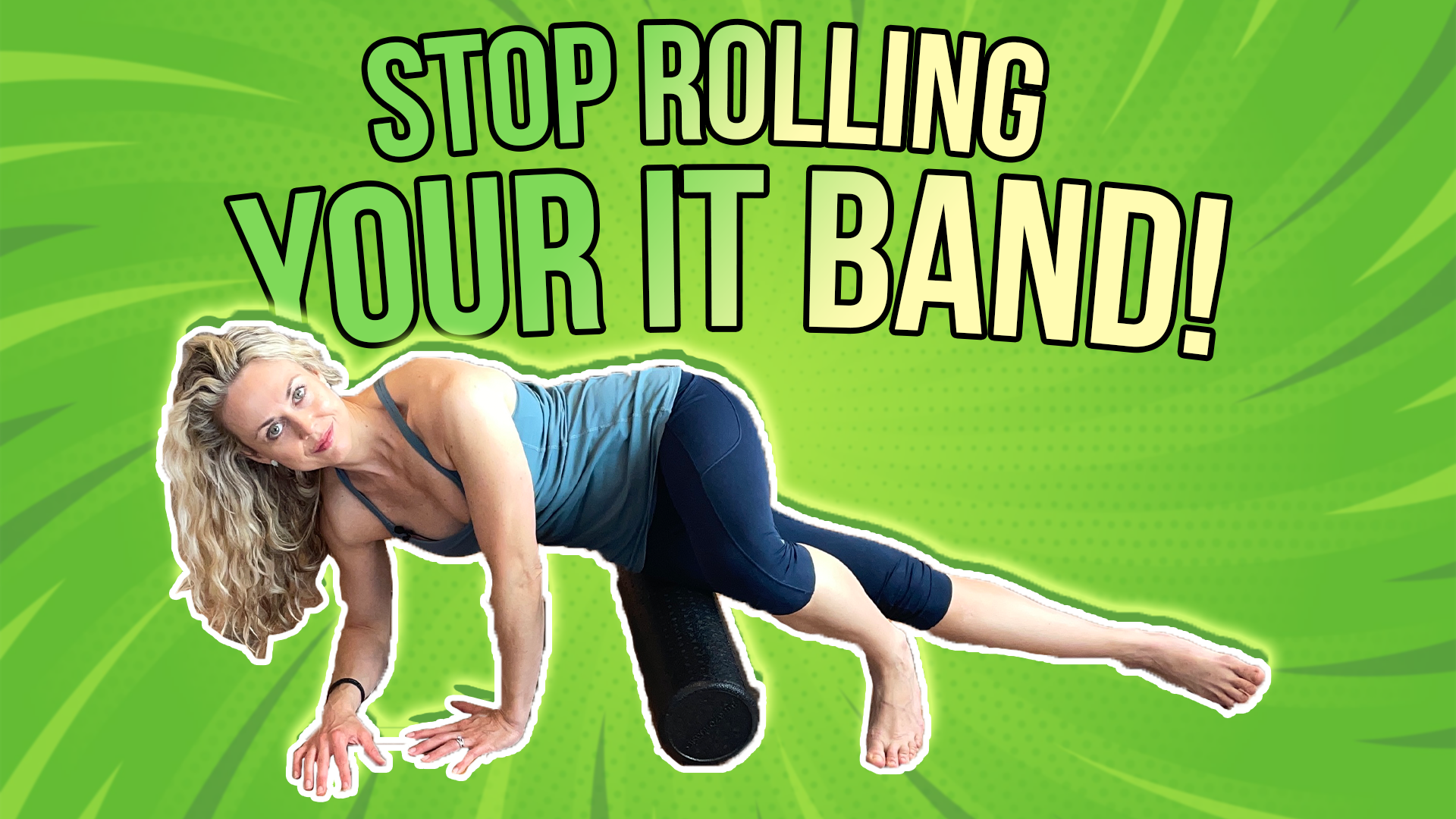Do you have IT band syndrome, and you have been foam rolling like crazy and there’s no improvement? In fact, it’s so painful when you do it, you can barely tolerate it. The IT band, short for illiotibial band is a thick band of fascia that runs along the lateral side of the leg. Think of our fascia as our ectoskeleton; it’s the glue that holds us together and is our force transmission system. An interesting fact about fascia is that it has seven times as many sensory nerves than muscle, which is why it feels so painful to roll your IT band. That is why foam rolling is not the most beneficial way to treat it. It is important to get to the root of the issue.
Rather watch or listen than read?
What are the muscles that the fascia attaches to? One is the TFL, tensor fascia latae, which is on the side of the hip, and the other is the glute max. Those are the two muscles that should be targeted through soft tissue release with IT band syndrome.
It is important to try to find the root cause. Just because we have pain near the outside of the knee does not mean that it is the source of the problem. Oftentimes there is a loss of deep hip stability or foot stability that is contributing to IT band syndrome. If there is a loss of stability in the hip, the TFL can become overactive and will pull the hip joint forward. Even the hamstrings can become overactive and push the hip forward. We then lose what we refer to as joint centration, which means that the hip is shifting forward and up. Therefore, soft tissue work, stabilizing the hip, and integrating the feet and the ground into movement are essential. Here are some ways to incorporate all of those things. Make sure to check out the video on how to perform these exercises HERE.
1) Soft Tissue Release
The first is the TFL release. You can use a lacrosse ball or tennis ball. Place the ball right on the outside of the hip and lie down on it. The bottom leg will be extended and the top leg can be bent. The leg will naturally rotate in and you can stabilize yourself with your elbows on the floor.
You would hold this for roughly two minutes. You’re goal is to completely relax. When you get to that painful point it might feel like it is taking your breath away, so if it doesn’t feel like that you can adjust the ball to a spot that does.
The second one is the glute release. For this one, bring the ball underneath the buttocks. Let the hip naturally rotate out. Once again you can hold it there for about two minutes. After you’ve done your soft tissue releases, now you want to move that tissue in its new range.
2) Hip 90/90 Stretch
Starting with your feet outside hip-width apart while sitting on the ground, you can drop your legs down to the side. This will be your 90/90 position. Bring your arms behind you and stabilize yourself in that position. Try to hold this here for a period of time. Following that, move to the back hip. You want to think of hinging from your hips, not just rounding your spine, over the front hip. You can make it active by pressing into the ground with your hands and breathing into that position.
3) Dynamic Movement
Now we want to integrate that into dynamic movement, specifically working in lateral and rotational planes. This can include various lunges and single leg balance activities.
You want to remember that IT band syndrome is a symptom, not a diagnosis. So think beyond rolling your IT band and look at a way to integrate all of this into more proper movement.
Reach out for a 15-minute FREE discovery session to see how we can help you on your journey.
For more content, make sure to subscribe to our YouTube channel here.
Other things that may interest you:
What Should You Eat For Chronic Pain? | Nutrition for Chronic Pain

